ABOUT BULGARIA
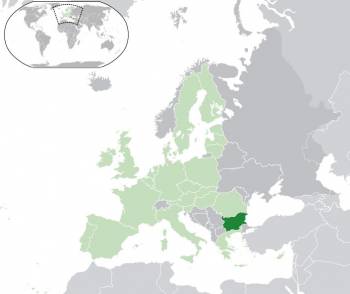
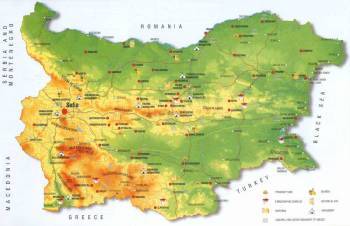
110,993.6 km2.
Population: 7.97 million
Capital City: Sofia
Official language: Bulgarian
Currency: Lev (BGN)
Exchange Rate 1 BGN = 0.51129 EUR
BGN is pegged to the Euro
Tel. Code: +359 (2 for Sofia)
Time: GMT+2
Bulgaria is one of the oldest European States with 20-century-old history and traditions. Modern Bulgaria is situated in Southeastern Europe, in the Balkan Peninsula – a busy crossroad of ancient cultures.
For centuries, the roads passing through the territory of the country have been connecting Europe with Asia and Africa. Four common European transport corridors, connecting West and North Europe with the eastern and southern part of the continent, cross their roads here.
Bulgaria is also known for its picturesque nature and rich cultural heritage. According to the statistics, the country ranks third in Europe only after Greece and Italy for the number of its valuable archeological monuments.
For more information on the history of Bulgaria click here.
Major cities
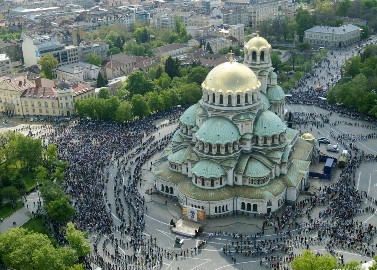 Sofia is the administrative capital and the cultural centre of Bulgaria and the biggest town in the country.
Sofia is the administrative capital and the cultural centre of Bulgaria and the biggest town in the country.
The foundations of the city have been laid about 7,000 years ago in the foot of the Vitosha Mountain.
Nowadays Sofia is a cosmopolitan city with a population of more than 1 mln. people.
The capital is a centre of the political life of Bulgaria, it has a well-developed cultural life and favourable business climate. It offers conditions for holding international conferences, symposia, seminars or fairs.
There exist a lot of museums and art galleries, theatres, concert halls and cinemas, opera and operetta theatres.
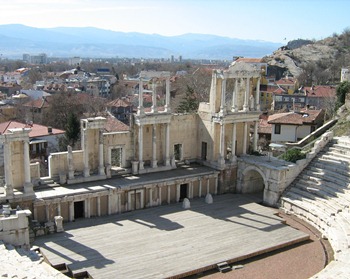 Plovdiv is the second biggest city in Bulgaria. It is located in the Upper Thracian Valley, along the coasts of the Maritsa River.
Plovdiv is the second biggest city in Bulgaria. It is located in the Upper Thracian Valley, along the coasts of the Maritsa River.
Founded by Philip II of Macedonia with the name of Philipopolis in 4 B.C. over the former Thracian settlement of Pulpudeva. Later the city was invaded by the Romans and called Trimontium. In the documents of the Ottoman Empire it is known as Filibe. It became the capital of Eastern Rumelia after the Liberation of the Principality of Bulgaria in 1878.
The old part of Plovdiv is declared an architectural and historical reserve. The houses of the late Revival can be outlined in architectural aspect.
The city is famous with the holding of the Plovdiv International Fair twice a year, as well as with the recognition won by the Plovdiv Philharmonic Orchestra at the International and Bulgarian stage.
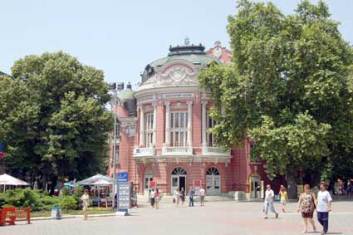 Varna is the third largest city in Bulgaria. It is situated at the Black Sea coast, at the Varna Gulf, near the resort complex of Zlatni Pyasatsi (Golden Sands).
Varna is the third largest city in Bulgaria. It is situated at the Black Sea coast, at the Varna Gulf, near the resort complex of Zlatni Pyasatsi (Golden Sands).
In ancient times it used to be a Greek colony – Odessos, and in 15th century it joined Vladislav III Varnenchik’s Christian army it its battle against the Ottoman troops. Archaeological and architectural monuments from the Eneolith, Antiquity and Middle Ages have been preserved – a basilica and churches.
Varna has some of the finest and oldest museums, professional arts companies, and arts festivals in the nation and is known for its century-old traditions in visual arts, music, and book publishing, as well as for its bustling current pop-culture scene. Over the past few decades, it developed as a festival centre of international standing. Varna is a front-runner for European Capital of Culture for 2019, planning to open several new high-profile facilities such as a new opera house and concert hall, a new exhibition centre, and a reconstruction of the Summer Theatre, the historic venue of the International Ballet Competition.
 Monasteries and sites
Monasteries and sites
The most remarkable monument of the period of the Bulgarian Revival is the Rila Monastery situated in the Rila Mountain, only 120 km. from the capital city of Sofia.
Some of the valuable historical and architectural landmarks are the Hrelyova Tower in the monastery court which dates from the 14th century and the original monastery kitchen, preserved from the 19th century.
A rich collection of museum exponents is kept at this spiritual cloister – manuscripts, documents and icons. An ethnographic exhibition of woven fabrics and carpets, jewellery and products of wrought iron is also shown. The monastery has a library with a fund of more than 16,000 books.
 A few kilometres from Veliko Tarnovo in the Village of Arbanasi two monasteries can be found which have preserved the spirit of the epoch of the Second Bulgarian Kingdom. The men’s figures and the scenes of Jesus Christ’s life are impressing, painted in daring hues and wide range of colours, as well as the variety of the architectural decoration.
A few kilometres from Veliko Tarnovo in the Village of Arbanasi two monasteries can be found which have preserved the spirit of the epoch of the Second Bulgarian Kingdom. The men’s figures and the scenes of Jesus Christ’s life are impressing, painted in daring hues and wide range of colours, as well as the variety of the architectural decoration.
The Bachkovo Monastery is one of the oldest ones in Bulgaria. It rises above a picturesque river valley to the South of the city of Plovdiv. The monastery attracts with its original architectural solutions, rich collection of icons and adornments and some of Zachari Zograf’s first works.
Situated in the Pirin Mountain, only a few kilometres from the picturesque town of Melnik, the Rozhen Monastery is the only one restored at the beginning of the Ottoman rule and survived unchanged until present times.
The monastery was built around 12th – 13th century by the ruler of Melnik, Despot Slav and it is famous mainly with its wood iconostasis and works of the calligraphic art.
Cusine
 The Bulgarian cuisine is distinguished with its strong taste, numerous condiments and spices and variety of fresh vegetables, fruits, carefully prepared main dishes and desserts. Among the traditional Bulgarian specialties are banitsa, musaka with minced meat and potatoes, banska kapama, Thracian katma, cabbage or vine-leaf sarma, lukanka, sudzhuk, pastarma, shopska salad, Bulgarian white brine cheese and home-made yoghurt.
The Bulgarian cuisine is distinguished with its strong taste, numerous condiments and spices and variety of fresh vegetables, fruits, carefully prepared main dishes and desserts. Among the traditional Bulgarian specialties are banitsa, musaka with minced meat and potatoes, banska kapama, Thracian katma, cabbage or vine-leaf sarma, lukanka, sudzhuk, pastarma, shopska salad, Bulgarian white brine cheese and home-made yoghurt.
Along with France, Spain, Italy and Greece Bulgaria is one of the biggest producers of wine in the world. The experienced connoisseurs distinguish the Bulgarian red wine sorts of Gamza, Pamid, Mavrud, Cabernet and Merlot and the white sorts of Muskat and Misket.
The traditional Bulgarian aperitif is the rakia – grape or plum which goes with vegetable salad.
Crime
Crime levels in big cities of Bulgaria do not vary considerably than in most large cities in EU. Pick-pocketing and bag-snatching may occur, especially in crowded places. Luxury cars may be subject to theft, if not insured properly. Follow the basic safety practices, generally applicable to tourists.
For more information on Bulgaria as touristic destination click here


